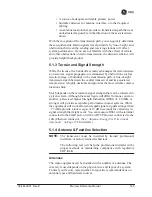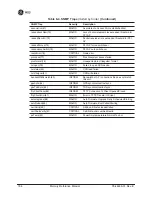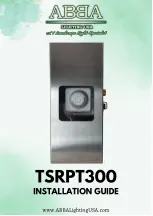
05-4446A01, Rev. E
Mercury Reference Manual
169
NOTE:
There is no minimum feedline length required when a 6 dBi
gain or less antenna is used, as the EIRP will never exceed
36 dBm which is the maximum allowed, per FCC rules at 900
MHz. MDS 3650 models must not exceed 1-watt per MHz.
Units must comply with the information given on Page 172
and the associated antenna tables. Only the manufacturer or a
sub-contracted professional installer can adjust the trans-
ceiver’s RF output power.
The transceiver’s power output is factory set to maintain
compliance with the FCC’s Digital Transmission System
(DTS) Part 15 rules. These rules limit power to a maximum of
8 dBm/3 kHz, thus the transceiver is factory set to +29 dBm
(900 model); 23 dBm (3650 model). When calculating
maximum transceiver output for the 900 model, use +29 dBm
if the antenna gain is 6 dBi or less (36 dBm ERP). See
How
Much Output Power Can be Used?
below for power control
with higher gain antennas. Refer to Page 172 and the associ-
ated antenna tables for both 900 and 3650 model compliance.
5.1.5 How Much Output Power Can be Used?
The transceiver is normally configured at the factory for a nominal RF
power output of +29 dBm (900 model); +23 dBm (3650 model) this is
the maximum transmitter output power allowed under FCC rules. The
power must be decreased from this level if the antenna system gain
exceeds 6 dBi (900 model). The allowable level is dependent on the
antenna gain, feedline loss, and the transmitter output power setting.
NOTE:
In some countries, the maximum allowable RF output might
be limited to less than the figures referenced here. Be sure to
check for and comply with the requirements for your area.
5.1.6 Conducting a Site Survey
If you are in doubt about the suitability of the radio sites in your system,
it is best to evaluate them before a permanent installation is underway.
You can do this with an on-the-air test (preferred method), or indirectly,
using path-study software.
An on-the-air test is preferred because it allows you to see firsthand the
factors involved at an installation site, and to directly observe the quality
of system operation. Even if a computer path study was conducted ear-
lier, perform this test to verify the predicted results.
Perform the test by first installing a radio and antenna at the proposed
Access Point (AP) station site (one-per-system). Then visit the Remote
site(s) with another transceiver (programmed as a remote) and a
hand-held antenna. (A PC with a network adapter can be connected to
Summary of Contents for Mercury 3650
Page 9: ...viii Mercury Reference Manual 05 4446A01 Rev E ...
Page 11: ...2 Mercury Reference Manual 05 4446A01 Rev E ...
Page 31: ...22 Mercury Reference Manual 05 4446A01 Rev E ...
Page 155: ...146 Mercury Reference Manual 05 4446A01 Rev E ...
Page 157: ...148 Mercury Reference Manual 05 4446A01 Rev E ...
Page 171: ...162 Mercury Reference Manual 05 4446A01 Rev E ...
Page 185: ...176 Mercury Reference Manual 05 4446A01 Rev E ...
Page 201: ...192 Mercury Reference Manual 05 4446A01 Rev E ...
















































